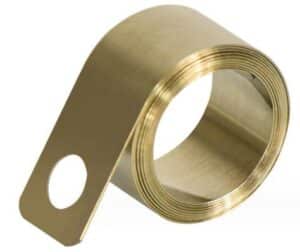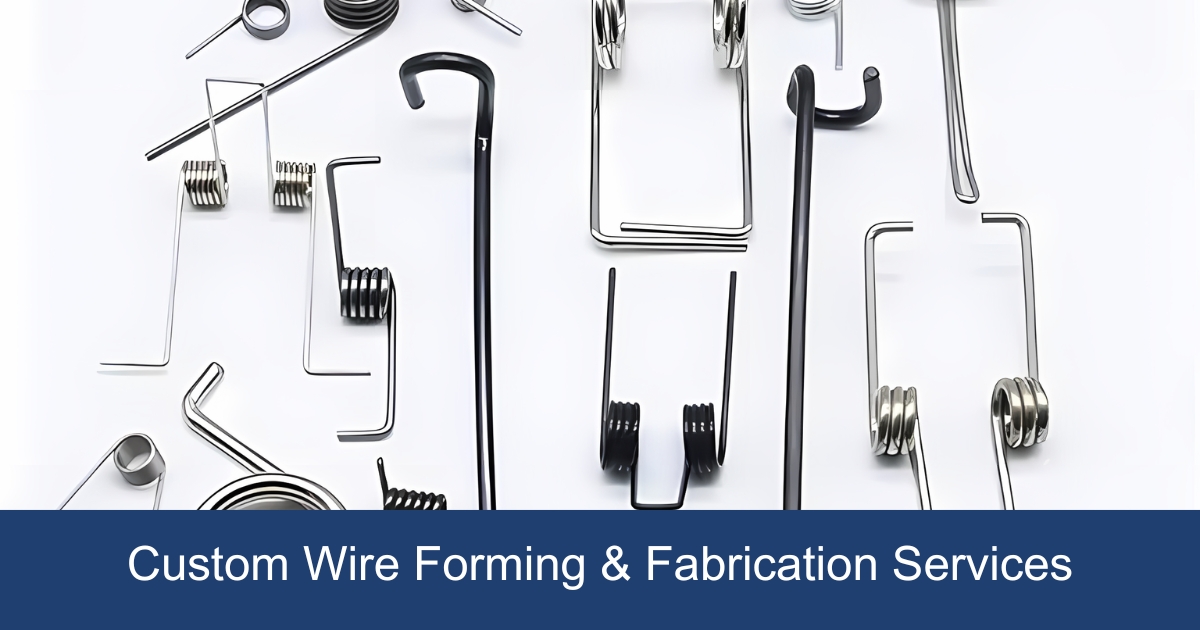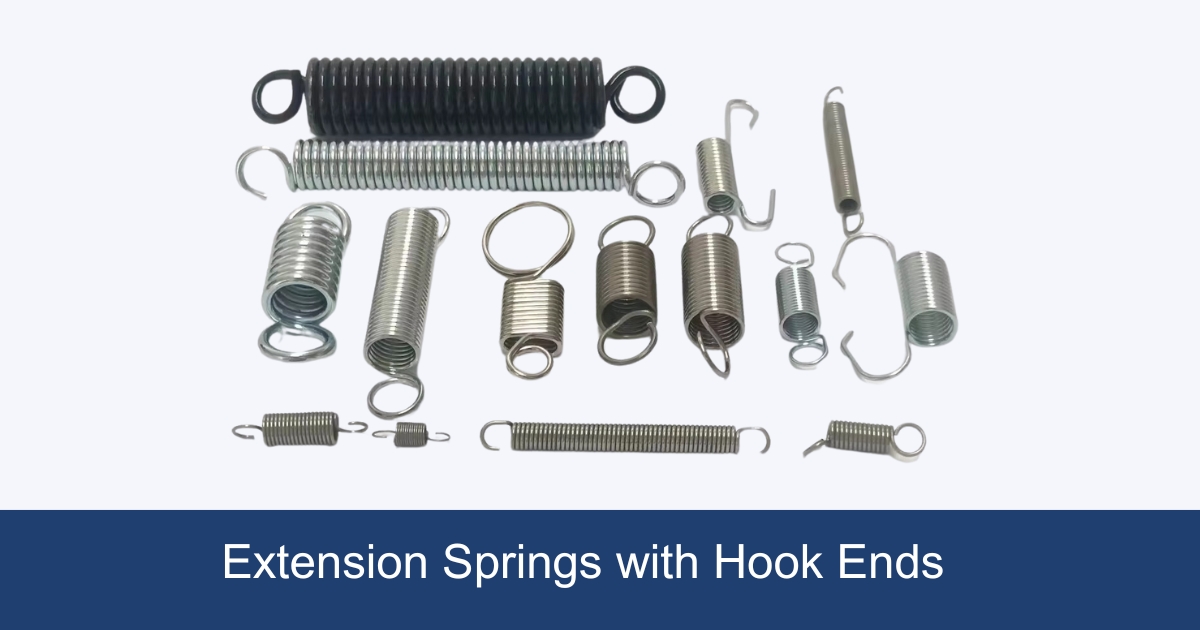As a clock spring expert, I have witnessed firsthand the importance of this small but crucial component in various industries. Clock springs play a vital role in devices that require rotational force, such as mechanical clocks, automotive steering systems, and industrial machinery. In this article, I will provide you with insights into the selection of clock spring materials, shedding light on the secrets that make them essential in countless applications.

Common Materials Used in Clock Spring Manufacturing
In clock spring manufacturing, selecting the right material is paramount to achieving optimal performance and durability. High-carbon steel, stainless steel, and phosphor bronze stand out as the most commonly utilized materials, each offering distinct properties and advantages.
Here’s a closer look at the characteristics of three commonly used materials:
High-Carbon Steel
High-carbon steel stands out for its robustness, attributed to its carbon content, typically ranging from 0.6% to 1%. This composition bestows the steel with high strength and hardness, alongside commendable wear resistance. Its ability to maintain integrity under high tension makes it a staple in applications demanding exceptional tensile strength.
Stainless Steel
Distinguished by its corrosion resistance, stainless steel incorporates chromium, creating a protective chromium oxide layer on its surface. Beyond its resistance to rust and staining, stainless steel maintains commendable strength and toughness. The alloy’s blend of strength and ductility, coupled with its anti-corrosive properties, renders it versatile across diverse manufacturing contexts.
Phosphor Bronze
An alloy primarily of copper, with tin and phosphorus additions, phosphor bronze is celebrated for its superb elasticity and corrosion resistance, along with a notably low coefficient of friction. Its outstanding fatigue resistance and electrical conductivity further underscore its utility in applications requiring durability and reliability.
These materials, each with distinct properties, are meticulously chosen based on the specific requirements of the clock springs they’re destined to become. High-carbon steel is favored for its unparalleled strength, stainless steel for its enduring resistance to environmental challenges, and phosphor bronze for its resilience and electrical compatibility, highlighting the tailored approach to material selection in clock spring manufacturing.
Specialty Materials for Advanced Applications
As clock spring design advances, the exploration and adoption of specialty materials have become crucial for meeting the sophisticated demands of certain applications. Beryllium copper and nickel alloys, in particular, stand out for their exceptional qualities and suitability for specialized uses.
A. Beryllium Copper
Beryllium copper is notable for blending high strength with beneficial properties such as non-magnetism and the absence of sparking. Its excellent electrical conductivity and superior fatigue strength make it unparalleled for springs requiring precise, consistent performance. The alloy’s resilience across a broad temperature spectrum and its reliability under repeated stress cycles are advantages that commend it to applications demanding unwavering performance and safety.
B. Nickel Alloys
Nickel alloys excel in environments that challenge lesser materials with their superb resistance to corrosion and ability to retain mechanical integrity at high temperatures. These alloys’ resilience in adverse conditions, coupled with advantageous magnetic properties, render them ideal for specialized clock spring applications. From the demanding arenas of aerospace to the corrosive environment of marine settings, nickel alloys deliver durability and consistent performance.
The deployment of beryllium copper and nickel alloys in clock spring manufacturing highlights the industry’s push towards materials that can endure and perform under stringent conditions. Their specialized properties not only meet but exceed the requirements of applications where traditional materials might falter, ensuring reliability and precision where it matters most.
Clock Spring Material Properties and Characteristics
The selection of material for clock springs is a critical decision that impacts the performance, durability, and application of the spring. Understanding the unique properties and characteristics of each material enables manufacturers to tailor clock spring designs for specific needs. Here’s a closer look at the essential properties that define clock spring materials:
Mechanical Properties
- Tensile Strength: This indicates the maximum stress a material can withstand while being stretched or pulled before breaking. Materials with high tensile strength are preferred for clock springs to ensure they can endure the operational stresses without failing.
- Elasticity: The ability of a material to return to its original shape after being stretched or compressed. High elasticity is crucial for clock springs, as it determines the spring’s ability to store and release energy effectively.
- Fatigue Resistance: Refers to a material’s ability to withstand repeated cycles of stress without breaking. Clock springs are typically subjected to numerous cycles throughout their lifetime, making fatigue resistance a vital consideration.
Environmental Considerations
- Corrosion Resistance: The capacity of a material to resist deterioration caused by chemical reactions with environmental elements. Corrosion-resistant materials are essential in applications where clock springs are exposed to harsh environments.
- Temperature Stability: The ability of a material to maintain its properties over a range of temperatures. Materials with good temperature stability are necessary for clock springs used in applications subjected to temperature fluctuations.
Manufacturing Processes Compatibility
- Workability and Formability: These characteristics determine how easily a material can be shaped into the desired form. Materials that are easy to work with and form can reduce manufacturing costs and complexity.
- Heat Treatment Compatibility: Some clock spring materials require heat treatment to achieve desired mechanical properties. Materials that respond well to heat treatment can offer enhanced performance characteristics.
Specialty Material Advantages
Beyond these basic properties, specialty materials like beryllium copper and nickel alloys offer additional benefits for advanced applications:
- Beryllium Copper: Offers non-magnetic and non-sparking properties, making it ideal for use in explosive environments. Its high electrical conductivity is beneficial for electronic applications.
- Nickel Alloys: Provide exceptional performance in extreme temperatures and corrosive environments, making them suitable for aerospace and marine applications.
Understanding these properties and characteristics is essential in selecting the right material for a clock spring, ensuring it meets the required performance standards while being suitable for the intended application environment. The choice of material not only affects the spring’s functionality but also its longevity and reliability, underscoring the importance of careful material selection in clock spring design.
| Property | Description | Example Materials |
|---|---|---|
| Tensile Strength | Maximum stress material can withstand before breaking. | High-carbon steel, Stainless steel |
| Elasticity | Ability to return to original shape after deformation. | Spring steel, Beryllium copper |
| Fatigue Resistance | Ability to withstand repeated stress cycles without failing. | Nickel alloys, Titanium |
| Corrosion Resistance | Resistance to deterioration from environmental elements. | Stainless steel, Nickel alloys |
| Temperature Stability | Maintains properties across a range of temperatures. | Inconel, Beryllium copper |
| Workability/Formability | Ease of shaping into desired form. | Aluminum alloys, Low-carbon steel |
| Heat Treatment Compatibility | Suitability for heat treatment to achieve desired properties. | High-carbon steel, Spring steel |
| Specialty Material Advantages | Additional benefits for specific applications. | Beryllium Copper (non-magnetic, high conductivity), Nickel Alloys (high temperature and corrosion resistance) |
How to Choose the Right Material for Your Application
Selecting the optimal material for a clock spring is pivotal to ensuring its performance, longevity, and compatibility with its intended application. A clock spring material calculator serves as an invaluable tool in this selection process, guiding engineers and designers through a systematic assessment of material properties, application requirements, and environmental conditions. Here’s a step-by-step approach to utilizing such a calculator effectively:
Step 1: Define Application Requirements
- Operational Stress: Input the expected range of operational stress the clock spring will endure.
- Cycle Life: Estimate the number of cycles the clock spring is expected to perform over its lifespan.
- Temperature Range: Specify the temperature range within which the clock spring will operate.
Step 2: Environmental Conditions
- Corrosive Exposures: Indicate if the clock spring will be exposed to corrosive substances or environments.
- Humidity Levels: Enter the expected humidity levels to account for potential corrosion or material degradation.
- Special Conditions: Note any other environmental factors, such as exposure to magnetic fields or requirement for non-sparking materials.
Step 3: Material Properties Input
- Utilize the calculator to compare materials based on key properties:
- Tensile Strength
- Elasticity
- Fatigue Resistance
- Corrosion Resistance
- Temperature Stability
Step 4: Compatibility with Manufacturing Processes
- Workability/Formability: Ensure the selected material can be efficiently worked into the desired clock spring shape.
- Heat Treatment: Confirm if the material benefits from heat treatment and its compatibility with the process.
Step 5: Calculator Analysis
- The calculator processes the inputs to suggest materials that meet the application’s demands. It considers the balance between mechanical properties, environmental resilience, and manufacturability to recommend the most suitable options.
A clock spring material calculator is a powerful tool that simplifies the complex decision-making process involved in selecting the right material for clock springs. By providing a structured approach to evaluate materials against a comprehensive set of criteria, designers can make informed decisions that enhance the clock spring’s performance and durability, ensuring the success of their projects.
Clock Spring Material Price
When considering the cost of materials used for clock springs, prices can vary widely based on the material’s composition, availability, and demand. Here’s a rough guide to the pricing hierarchy from lowest to highest, along with notes on common usage:
| Material | Price Range | Common Usage |
|---|---|---|
| High-Carbon Steel | Lowest | Widely used for its strength and flexibility; ideal for various applications requiring high tensile strength and fatigue resistance. |
| Stainless Steel | Moderate | Used where corrosion resistance is needed along with strength; suitable for mechanical and outdoor applications. |
| Phosphor Bronze | Higher than most steels | Chosen for excellent corrosion resistance, low wear, and good electrical conductivity; often used in electrical connectors and mechanical parts. |
| Nickel Alloys | Variable, generally high | Selected for extreme conditions in aerospace, marine, and chemical processing due to high-temperature and corrosion resistance. |
| Beryllium Copper | Highest | Used in applications requiring non-sparking properties, high strength, and good conductivity; typical in aerospace, oil and gas, and automotive safety. |
Material selection for clock springs is driven by both application-specific requirements and budget constraints. High-carbon steel and stainless steel are the most commonly used due to their balance of performance and cost. In contrast, materials like beryllium copper and certain nickel alloys are chosen for their specialized properties in more demanding applications, despite their higher cost.
Advantages of Using High-Tensile Spring Steel for Clock Springs
- High Strength: High-tensile spring steel has exceptional strength, enabling the spring to withstand significant stress without deformation. This property is crucial for clock springs that must endure constant winding and unwinding.
- Superior Fatigue Resistance: These materials are designed to endure numerous cycles of flexing without losing their strength or breaking. This resistance to fatigue extends the life of clock springs, making them reliable for long-term use.
- Excellent Elasticity: High-tensile steel maintains excellent elasticity, allowing clock springs to return to their original shape after deformation. This characteristic ensures consistent performance over time.
- Good Wear Resistance: The hardness of high-tensile spring steel contributes to its wear resistance, reducing the likelihood of damage from friction and extending the operational life of the spring.
- Temperature Tolerance: High-tensile spring steel can perform under a wide range of temperatures without losing its mechanical properties, making it suitable for various environments.
Expert Advice from Clock Spring Manufacturers
Clock spring manufacturers possess extensive knowledge and expertise in the field. Consulting with these experts can provide valuable insights and guidance when it comes to clock spring design, material selection, and performance optimization. Clock spring companies often have dedicated support teams that can assist engineers and designers in overcoming challenges, selecting the right materials, and ensuring the success of their projects.
Unlock the true potential of clock spring materials – consult with our clock spring experts today!



